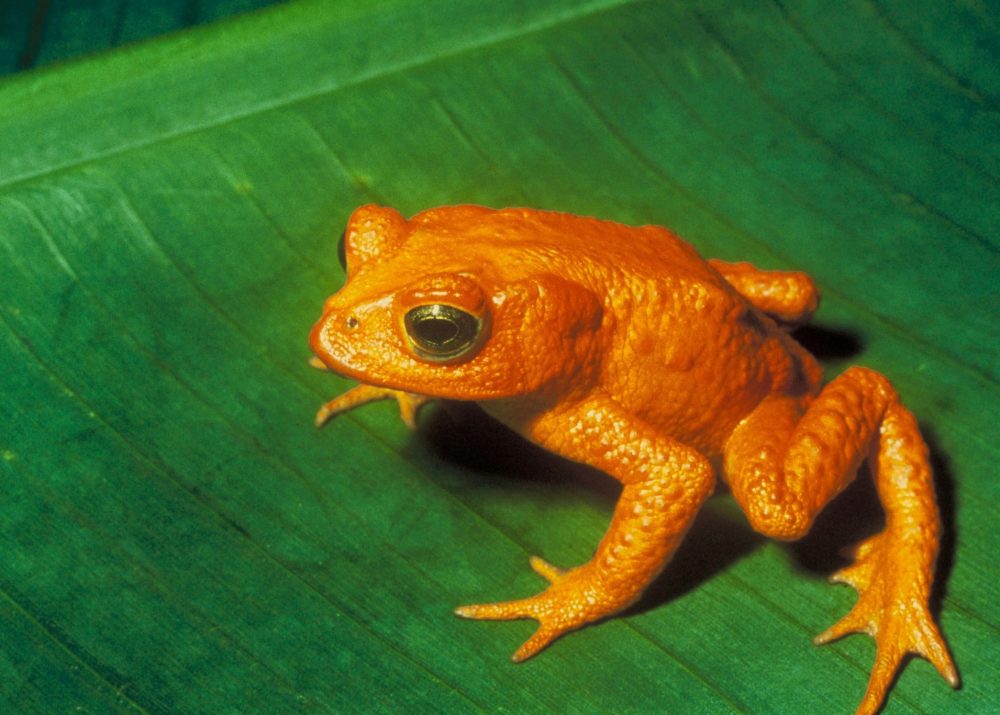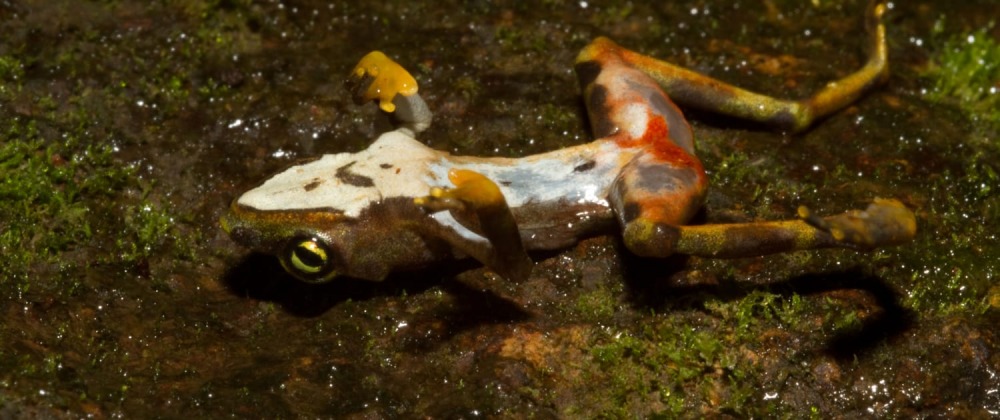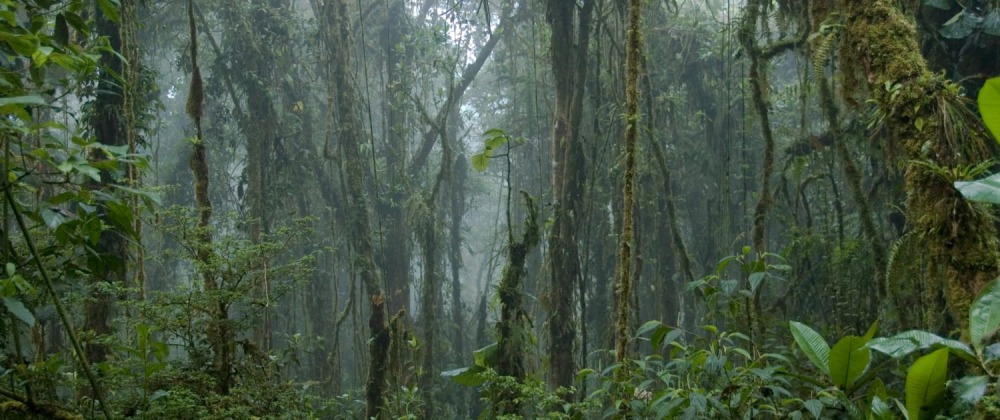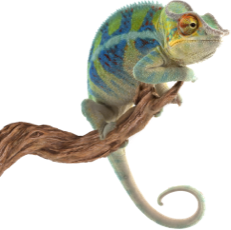Thirty Years After the Last Golden Toad Sighting, What Have We Learned?

The story of Costa Rica’s Monteverde Cloud Forest is like so many other protected areas. First, biologists noticed incredible species in an ecosystem. In Monteverde’s case, the forest contained tropical birds like the Resplendent Quetzal and amphibians like the Golden Toad. But then, like so many other protected areas, they also documented threats — in this case, habitat degradation from squatters and hunting. So, at last, they worked to protect the forest.
And thus, the Monteverde Cloud Forest Reserve came into existence in 1973. Soon after opening, it hosted tourists and researchers from around the world. The reserve grew over time, offering more and more protection for its species.
All went according to plan.
Until it didn’t.
The Golden Toad was endemic to the Monteverde Cloud Forest — found nowhere else on Earth. The species was a brilliant burnt-yellow, prone to easy spotting in its thick, green rainforest home. That’s if you were around during the short time the toad was above ground. The species spent most of its life underground, emerging only for a few days at the end of the dry season to mate.
Spotting the frogs must have been an incredible sight to behold. In 1987, between April and July, researchers noted nearly 1,500 adult toads scattered between a few shallow pools around the forest. Imagine — these bright yellow toads, seen once a year, all converging on puddles to breed before retreating underground.
But in 1988, scientists found only one toad, a male, in the same area. They documented nine more a couple of miles away.
And then in 1989, they spotted one male toad — and nothing else.
In 1990, they found none.
And so it’s been ever since. Finally, in 2004, the International Union for Conservation of Nature declared the Golden Toad “Extinct.”
From 1,500 to 10 in one year. From 10 to one in the next. That is, respectively, a 99% drop and a 90% drop. Of course, going from one to zero is a 100% decline.
What lead to this precipitative drop?
This question leads into a near thirty-year debate on why, exactly, the Golden Toad went extinct. A paper in 1992 (when researchers still hoped some toads were hiding somewhere) noted that in 1988-1990, rainfall started later after the dry season. What’s more, the rain came down heavier at first, instead of slow to start. The pools used for frog breeding filled faster, which may have removed the window of shallowness needed to breed.
They speculated that small changes in climate might lead to catastrophic collapse. With the scientific community now examining the effect of global warming on ecosystems, this was significant.
But around the same time, amphibian researchers discovered another, once-hidden threat. Researchers around the world found a striking similarity in precipitous amphibian population declines. It seemed amphibians were on the verge of collapse everywhere — and no one could figure out why.
In 1993, researchers first found a possible culprit. Fungi in the genus Batrachochytrium, also known as “chytrid” was causing a fatal disease called chytridiomycosis. After decades of research, we know that at least two chytrid fungal species can lead to the disease. Researchers today cite the chytrid fungus as the likely cause of extinction for the Golden Toad. And, I should add, dozens of other amphibian species. The crisis is still occurring. Amphibians are dying everywhere, with species clinging to existence. It’s the most deadly threat to biodiversity you’ve never heard of.

But we’re still uncertain of where chytrid came from, why/how it becomes fatal or how it spreads. Some scientists argue that climate change might alter the fungus’s growth pattern, leading to disease. Others note that amphibians have a chytrid-fighting bacteria on their skin. But something in the environment — like chemical pesticides or other pollution — might impede their immune response to the fungus. The spores can spread through soil and water, but they might also spread through rain.
We also don’t know how to stop it.
This threat doesn’t bode well for the Monteverde Cloud Forest Reserve. In fact, this type of threat doesn’t bode well for habitat protection at all. Climate change, fungal diseases — these won’t stop at a fence. A forest guard can’t stop these threats from passing into a reserve. Why even protect land if indiscriminate threats can still kill wildlife?

But while protected areas aren’t catch-alls, they’re not useless. As the world’s ecosystems face a multifaceted barrage of threats, we need to keep habitats as intact as possible. Much like ecosystems, threats to ecosystems are interconnected.
Climate change can reduce rainfall — leading to wildlife migration outside protected areas in search of water. But protecting more land increases the likelihood they can find drinking water within a reserve.
Poaching targets individual animals for meat. But if habitat degradation causes a decrease in pollinator species, crops may not offer enough food for a family anymore. They might poach to survive.
Habitat is the basis of ecological survival. Land conservation is the first step for any species facing extinction because any conservation program is useless without habitat. Intact ecosystems are their own support systems — the more of an ecosystem remains intact, the more resilience it has against threats. Habitat loss is the leading cause of extinction worldwide, so habitat protection is one of the leading necessities of preventing extinction. Fences may not stop killer fungi, but they do keep species happy otherwise — making them stronger in the face of killer fungi. We’ve also rediscovered species once thought to be extinct in protected areas — like the “golden wonder” salamander.
In the thirty years since the last Golden Toad sighting, scientists and amateur herpetologists alike have searched in vain for the little, colorful amphibian. They’ve found zilch, nada, squat — every time. Over time, the Golden Toad has become a symbol of extinction and the amphibian biodiversity crisis. This week, many herpetologists mourn one of the world’s most-analyzed and rued amphibian losses.
Thirty years later, amphibians are still on the edge of oblivion. But in those thirty years, we’ve discovered chytridiomycosis. We’ve developed more plans to build ecosystem resiliency in the face of climate change. We’ve expanded protected areas, including the Monteverde Cloud Forest Reserve. Rainforest Trust actually helped secure an additional 100 acres for the reserve in 1993.
The work we’ve done to prevent other frogs from the Golden Toad’s fate hasn’t been enough. But it’s been a start. And you can’t get anywhere without that.
Explore more

Sign up to receive the latest updates
"*" indicates required fields

